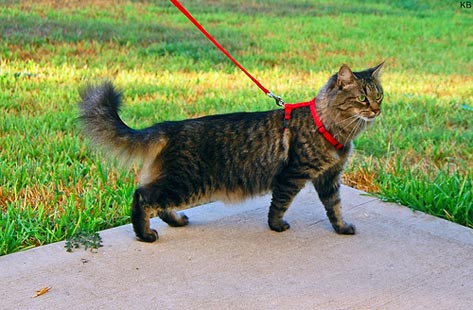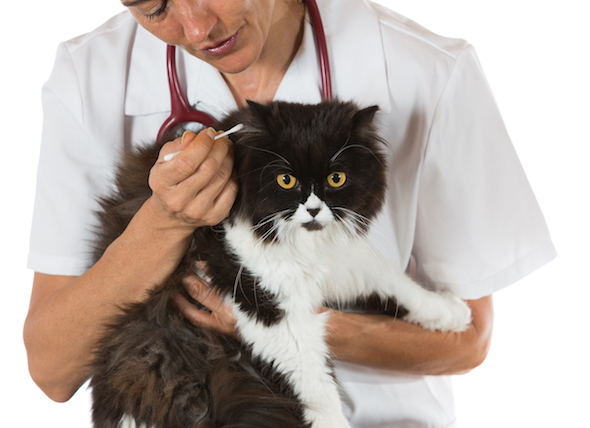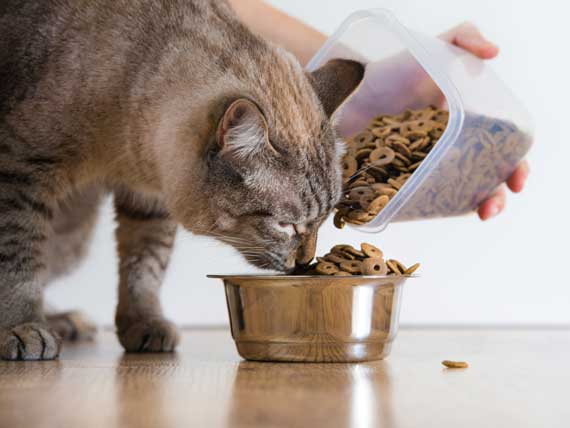There are two main categories of causes for a cat litter box problem: physical problems or behavioral issues. If your cat is experiencing difficulty, the first thing you should do is have your veterinarian rule out physical causes.
If your cat learns to link a bad experience with the litter box, she may start to resent the box. If this happens often enough, she may stop using the box altogether. You should be aware that the problem may have a physical cause at the root.
Below are four physical reasons why your cat can't or won't use the box.
1. Painful Urination - any medical condition that causes a cat pain while urinating will create a bad association. Since your cat can't hold it forever, she's going to urinate somewhere other than the box at some point. Often, once cats go in a spot, they will return to that spot until you completely remove the odor and/or retrain the cat.
2. Pain During Bowel Movements - constipation and other conditions can cause pain during bowel movements. If this is your cat's problem, she will associate pain with the box. When she does go, it may be on the living room rug, instead of in the box.
3. Painful Joints and Muscles - if your cat can't get in and out of the litter box without experiencing pain, she won't want to use it. If there is anything causing her pain while squatting, or getting in and out of the box, it could mean trouble. Injuries, arthritis, or some other painful joint condition could create a cat litter box problem.
4. Limited Range of Motion - it's possible that your cat may not be able to climb up into the litter box. If you have an older cat, or injury or disease has limited her movement, she won't be able to use the box.
Many readers believe that litter box problems are always behavioral. I hope this article has shed some light on other possibilities. If your cat is having a physical problem that you are unaware of, your vet can help sort that out.
For painful urination, bowel movements, or joint or muscle pain, proper treatment will have to be sought out in consultation with your vet. Once the pain is gone, some retraining will probably be required and a large amount of patience on your part to help your cat through it.
If your cat has a limited mobility problem, there may be some things you can do to help that, in addition to veterinary care. In any case, make it as easy on your cat as possible. A low litter box that your cat doesn't have to step too high into is a good start. A large box that your cat can easily move around in is another idea.
Once the physical cause of a cat litter box problem is identified by your vet, you can work together to help your cat get better. Remember to address any issue that causes your cat to associate an unpleasant experience with the box as soon as possible. Catching these problems early on makes them much easier to deal with.

 How to Walk Your Cat (and Live to Tell About It)
Ever seen a cat out walking on a leash? Mo
How to Walk Your Cat (and Live to Tell About It)
Ever seen a cat out walking on a leash? Mo
 'Natural' Methods for Controlling Fleas in Cats
By Jennifer Kvamme, DVM
There are a lot of differe
'Natural' Methods for Controlling Fleas in Cats
By Jennifer Kvamme, DVM
There are a lot of differe
 How to Clean a Cat’s Ears
By Elizabeth Xu
Your
How to Clean a Cat’s Ears
By Elizabeth Xu
Your
 Eco-Friendly Cat Litter
What smells if you don’t
Eco-Friendly Cat Litter
What smells if you don’t
 5 Things that Could Help Prevent Cat Food Recalls Today
By Lorie Huston, DVM
The l
5 Things that Could Help Prevent Cat Food Recalls Today
By Lorie Huston, DVM
The l